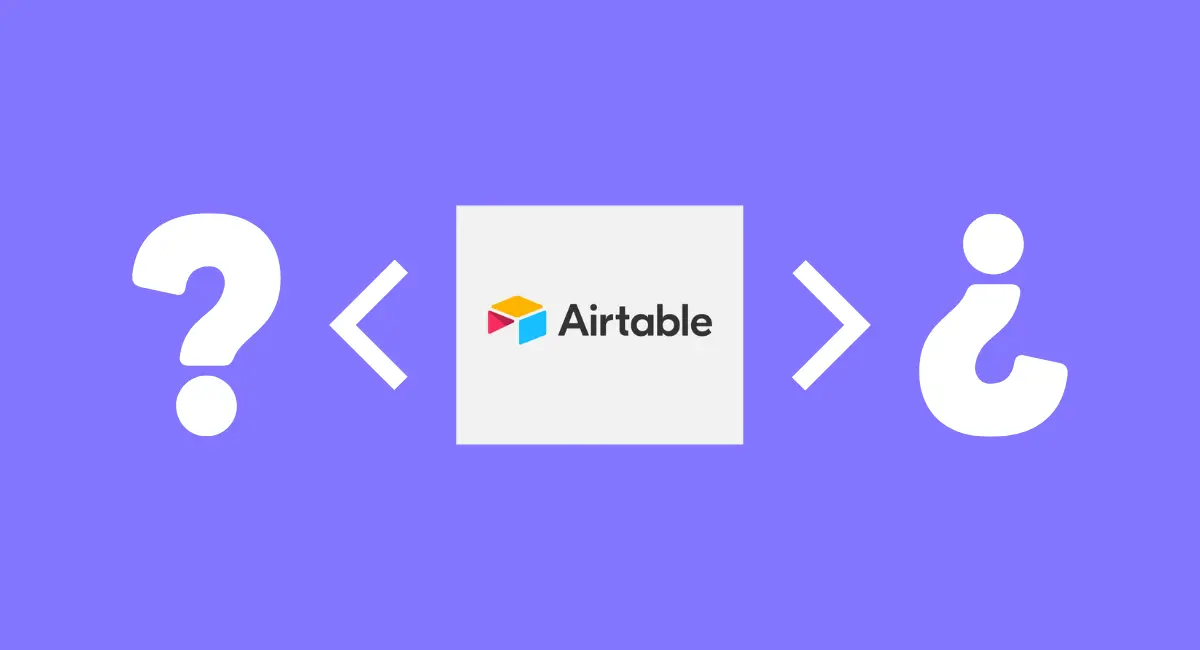Keeping track of who’s in and who’s out can be a real headache, especially as businesses grow. Many companies, even in 2025, still stumble over basic attendance tracking. It’s not just about knowing if someone showed up; it’s about how these little details impact everything from payroll to team morale. We’re going to look at some common Employee Attendance Management Mistakes that trip up HR teams and what you can do to avoid them.
Key Takeaways
- Manual tracking methods like spreadsheets are prone to errors and waste valuable time.
- Mismanaging attendance can lead to payroll mistakes, legal issues, and decreased productivity.
- Clear communication about attendance policies and expectations is vital for employee understanding.
- Modern attendance systems offer automation and integration to simplify HR processes.
- Investing in the right attendance management software can save money and improve overall business operations.
Why Attendance Management Is Crucial for HR Teams
Keeping tabs on who’s in and who’s out might seem like a basic HR task, but honestly, it’s way more important than many people realize. For HR teams, getting attendance management right is a big deal. It’s not just about knowing if someone showed up for work; it touches on a lot of other areas that keep a company running smoothly. Accurate attendance tracking is the bedrock of efficient workforce management.
Legal Compliance
First off, there are laws about this stuff. Employers are generally required to keep records of employee hours. Depending on where you are, there are specific rules about how long you need to keep these records, and what happens with overtime. Not keeping up with these can lead to some serious headaches, like fines or legal trouble. It’s important to check the specific rules for your location to make sure you’re following them. This is a big reason why having a solid system in place is a good idea.
Payroll Accuracy
This is a pretty obvious one. If you’re paying people by the hour, or even if you have complex overtime rules, you absolutely need to know how many hours everyone actually worked. Trying to figure out payroll without good attendance data is like trying to bake a cake without a recipe – it’s messy and usually doesn’t turn out right. Automated systems make this whole process much simpler and help avoid costly mistakes. It’s about making sure people get paid correctly for the time they put in.
Performance Insights
Attendance isn’t just about presence; it can also offer clues about performance. When HR and managers can see patterns in attendance, like frequent late arrivals or unexpected absences, it can sometimes point to underlying issues. This isn’t about spying on employees, but rather about understanding team dynamics and productivity. By looking at attendance alongside work output, you can get a clearer picture of how individuals and teams are performing. This information can help identify areas where support might be needed or where processes could be improved to boost overall output. For example, consistent tardiness might signal burnout or disengagement, prompting a conversation rather than just a disciplinary action.
Streamlining HR Operations
When attendance is managed well, it makes a lot of other HR tasks easier. Think about how it connects to scheduling, managing leave requests, and even workforce planning. A good attendance system can integrate with other HR software, making data flow more smoothly. This reduces the amount of manual work HR staff has to do, cutting down on errors and freeing them up to focus on more strategic tasks. It helps create a more organized and efficient HR department overall. You can find more information on how attendance management systems can help streamline HR operations.
Employee Self-Service and Accountability
Modern attendance systems often include features that let employees manage their own time records and leave requests. This puts more responsibility on the employee, which can be a good thing. It gives them more control over their data, leading to greater transparency and potentially fewer disputes over hours worked. When employees can easily see their own attendance records and submit requests, it simplifies things for everyone and builds a sense of trust. It also takes some of the administrative load off the HR team, allowing them to focus on more complex issues.
Common Employee Attendance Management Mistakes to Avoid

Let’s talk about some of the common employee attendance management mistakes that can really mess things up for HR teams and the whole company. It’s easy to think attendance is straightforward, but there are quite a few ways things can go sideways.
Manual Tracking and Data Inaccuracies
One of the biggest pitfalls is relying on manual methods, like spreadsheets or paper timesheets. Honestly, these are just asking for trouble. Human error is a given, and it leads to all sorts of attendance tracking errors. Think about it: someone forgets to clock in or out, or they fill out the wrong date. Then you’ve got payroll headaches. Plus, if you have multiple locations, trying to keep track of who worked where and when becomes a nightmare. This can lead to common payroll mistakes that frustrate employees and cost the company money.
Miscommunication and Unclear Policies
Another common issue is when employees just don’t understand the schedule or the company’s attendance policy. This can result in unexpected absences or people showing up at the wrong place. Clear communication about expectations is key to improving employee punctuality. If people aren’t sure when or where they’re supposed to be, they’re more likely to make mistakes.
Ignoring Legal Compliance and Breaks
Companies sometimes overlook the legal side of things, especially regarding breaks. Labor laws often mandate that employees take specific breaks. If your tracking system doesn’t properly account for these, you could be in violation. This is a serious oversight that can lead to legal trouble.
Buddy Punching and Lack of Accountability
Buddy punching, where one employee clocks in or out for another, is a persistent problem, especially in shift-based environments. Without a solid system to prevent this, you’re essentially paying for time not worked. This directly impacts payroll accuracy and overall workforce management best practices.
Consequences of Common Employee Attendance Management Mistakes

When attendance management goes sideways, it’s not just a minor inconvenience; it can really mess things up for your business. The ripple effect of poor attendance tracking touches almost every part of your operations. Think about it: if you’re not getting accurate hours, your payroll is going to be off. This isn’t just a few cents here and there; according to the American Payroll Association, manual tracking errors can cost companies up to 7% of their total payroll annually. That’s a huge chunk of change that could be used for, well, anything else.
Payroll Errors and Financial Strain
This is probably the most direct hit. Incorrectly recorded hours mean incorrect paychecks. Employees get frustrated when their pay isn’t right, and honestly, who can blame them? It erodes trust. Plus, fixing these mistakes takes time that HR could be spending on more strategic tasks. It’s a drain on resources and morale.
Decreased Productivity and Operational Hiccups
When people aren’t where they’re supposed to be, or when shifts are covered by the wrong people because schedules are a mess, work just doesn’t get done efficiently. If one person is out and the system doesn’t show who’s available or who’s supposed to be covering, a busy shift can become a total disaster. It’s like trying to run a race with missing runners – the whole team suffers.
Compliance Risks and Legal Issues
Missing breaks, incorrect overtime calculations – these aren’t just minor slip-ups. They can actually put you on the wrong side of labor laws. Not properly tracking breaks, for instance, can lead to legal trouble, even if employees say they don’t mind. The law has rules for a reason, and ignoring them is a risky game. You don’t want to be dealing with fines or lawsuits because of something as basic as attendance tracking.
Employee Morale and Trust Erosion
Nobody likes feeling like their time isn’t being valued or that the system is unfair. When employees see inconsistencies or have to constantly chase down corrections for their hours, it’s a major drag on morale. It makes them question management and the company’s overall organization. A lack of clear communication about attendance policies, like the importance of clocking in and out correctly, can also lead to misunderstandings and resentment. It’s hard to build a strong team when the basics aren’t handled well. You can find some good advice on improving communication in management practices at [375b].
Inaccurate Data for Decision Making
All these little errors add up to big problems with your data. If your attendance records are a mess, how can you possibly make good decisions about staffing, scheduling, or even future growth? You’re essentially flying blind. Accurate data is the bedrock of smart business strategy, and flawed attendance tracking undermines that completely. It makes it tough to see the real picture of your workforce’s time and availability.
Recommendations to Avoid Employee Attendance Management Mistakes
So, you’ve seen the common slip-ups in managing employee attendance. Now, what’s the game plan to steer clear of these issues? It really comes down to being proactive and picking the right tools. Getting your attendance tracking system dialed in isn’t just about catching people out; it’s about building a more efficient and fair workplace for everyone.
Implement Automated Tracking
Forget the old paper sign-in sheets or even clunky spreadsheets. Modern businesses need automated systems. Think about tools with automatic clock-in/clock-out features that can link up with smartphones or even biometric scanners. This cuts down on errors and saves a ton of time. For teams that are out and about, geofencing is a neat trick to make sure folks are actually where they say they are when they clock in. Plus, don’t forget to run regular checks on the data – it’s like a quick tune-up to catch any weird numbers before they become big problems.
Prioritize User-Friendly Software
Nobody likes wrestling with complicated software, right? If your team spends more time trying to figure out the time-tracking app than actually working, it’s a problem. Look for systems with clean, simple interfaces that don’t require a manual the size of a phone book to understand. Mobile access is also a big plus for employees who are always on the move. Offering a little refresher training now and then doesn’t hurt either, just to make sure everyone’s on the same page.
Ensure System Integration
Your attendance system shouldn’t be an island. It needs to talk to your payroll and HR software. When these systems don’t sync up, you end up doing a lot of manual data entry, which is a recipe for mistakes and can mess up payroll. Try to find cloud-based platforms that are built to connect with the other tools you already use. If direct integration isn’t an option, look into using APIs or middleware to bridge the gap. Good vendor support can also be a lifesaver when you hit integration snags. Choosing software that works well with your existing setup can lead to a significant reduction in payroll processing errors.
Establish Clear Attendance Policies
It sounds obvious, but having a well-defined and clearly communicated attendance policy is key. Make sure everyone understands the rules regarding punctuality, breaks, and reporting absences. This policy should be easily accessible and reviewed periodically. When expectations are clear, there’s less room for confusion or disputes. This helps in managing employee expectations and provides a solid framework for addressing attendance issues fairly.
Regularly Review and Analyze Attendance Data
Don’t just collect the data; use it! Set aside time to look at attendance trends. Are there patterns of lateness or absenteeism on certain days or with specific teams? This information can highlight underlying issues, like workload distribution problems or potential burnout. For instance, you might find that identifying coverage needs during peak periods and better distributing work hours can improve overall efficiency and satisfaction. Analyzing this data helps you make informed decisions to improve your workplace. See how to track employee time.
How TaskFino HRMS Solves Attendance Management Issues
Managing employee attendance shouldn’t be a daily hassle—but for many businesses, outdated methods, manual tracking, and scattered data still make it a challenge. These mistakes often lead to payroll discrepancies, scheduling conflicts, and unnecessary stress for HR departments. TaskFino HRMS offers a smart, centralized solution that simplifies and automates the entire attendance process—saving time, improving accuracy, and boosting productivity.
Real-Time Attendance Tracking You Can Rely On
TaskFino’s attendance module allows HR teams and managers to monitor check-ins and check-outs in real time. Instead of waiting for end-of-day reports or depending on error-prone manual logs, you get instant visibility into your workforce. This real-time tracking reduces the risk of attendance discrepancies and supports smarter daily decision-making—especially in dynamic work environments.
Simplified Leave Management with Built-In Transparency
With TaskFino, leave requests and approvals are fully digitized within the platform. Employees can submit requests directly, and managers receive instant notifications for review. This not only eliminates paperwork and email threads but also ensures full transparency across departments. Everything is documented in one place, reducing miscommunication and ensuring fair leave management for all.
Seamless Integration with Payroll for Accurate Processing
Manual data entry between attendance and payroll is one of the most common sources of error. TaskFino eliminates this by linking your attendance records directly with your payroll module. The system auto-calculates work hours, overtime, and deductions based on real-time data—resulting in faster, error-free salary processing and a more streamlined HR workflow.
Insightful Data Analytics for Smarter HR Decisions
TaskFino goes beyond basic tracking by offering actionable insights through attendance reports and analytics. You can quickly identify trends such as habitual absenteeism, late arrivals, or departmental inconsistencies. These insights empower HR teams to make informed decisions about resource planning, tasks, and policy refinement—shifting your strategy from reactive to proactive.
Wrapping Up: Moving Beyond Old Attendance Habits
So, we’ve talked about all the ways companies mess up attendance tracking. It’s pretty clear that sticking with old methods like spreadsheets or manual logs just doesn’t cut it anymore, especially with how work is changing. Things like buddy punching, errors in hours, and not following labor laws can really cost a business, not just in money but also in employee morale. The good news is, there are many better ways to handle this now.
Using modern software, whether it’s for a single office or multiple locations, can really sort out a lot of these headaches. It makes things fairer for everyone and frees up managers to focus on what actually matters. If you’re still stuck in the past with how you track attendance, it’s probably time to look at upgrading. It’s not just about being up-to-date; it’s about running your business smoothly and keeping your team happy.
Frequently Asked Questions
Why is tracking employee attendance so important for businesses?
Keeping track of who shows up for work and when is super important for businesses. It helps make sure everyone gets paid correctly and that there are enough people to do the work. When people don’t show up, it can make other workers stressed, slow down how much gets done, and even mess up customer service. Plus, not tracking attendance correctly can lead to legal trouble if breaks or overtime aren’t handled properly.
What are some typical mistakes companies make with attendance tracking?
Some common slip-ups include not having a good system, which can lead to mistakes like people clocking in or out at the wrong times or for the wrong places, especially if a company has more than one office. Other mistakes are when employees forget to clock in or out, or when breaks aren’t logged correctly. Relying on manual tracking, like spreadsheets, often causes errors and takes up too much valuable time.
What happens if a company messes up attendance management?
When attendance isn’t managed well, it can cause a lot of problems. Employees might not show up because they misunderstood the schedule, or they might not get paid accurately, which makes them unhappy. It can also lead to situations where there aren’t enough workers during busy times, or too many during slow times. In the worst cases, it can mean breaking labor laws, which can result in fines or lawsuits.
What are some specific bad behaviors that come from poor attendance tracking?
One big issue is ‘buddy punching,’ where one employee clocks in for another. This is a waste of money for the company. Another problem is when employees don’t understand why showing up on time is important for the company’s success. Not talking clearly about attendance rules and expectations can lead to confusion and problems.
What’s the best way to fix attendance tracking problems?
Instead of using old methods like paper timesheets or basic spreadsheets, companies should use modern software. These systems can automatically track when employees start and finish work, manage time off requests, and even help with scheduling. Using technology like mobile apps or biometric scanners can make tracking more accurate and easier for everyone.
Can technology help make attendance management better?
Yes, technology can really help! Things like employee self-service portals let workers see their own hours and request time off, which reduces the workload for HR. Also, using data from attendance systems can help managers see patterns, predict when more staff might be needed, and make smarter decisions. This makes the whole process smoother and more efficient.




